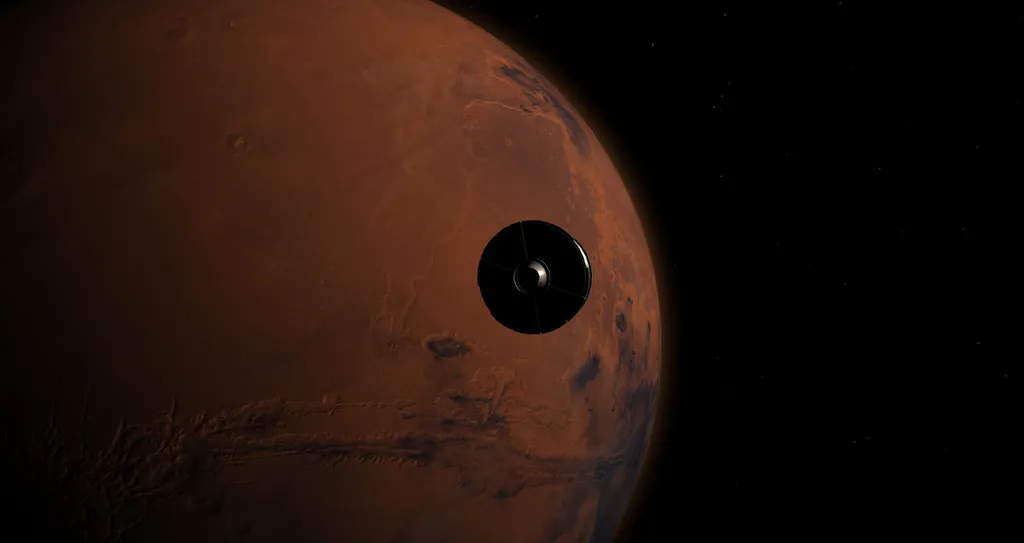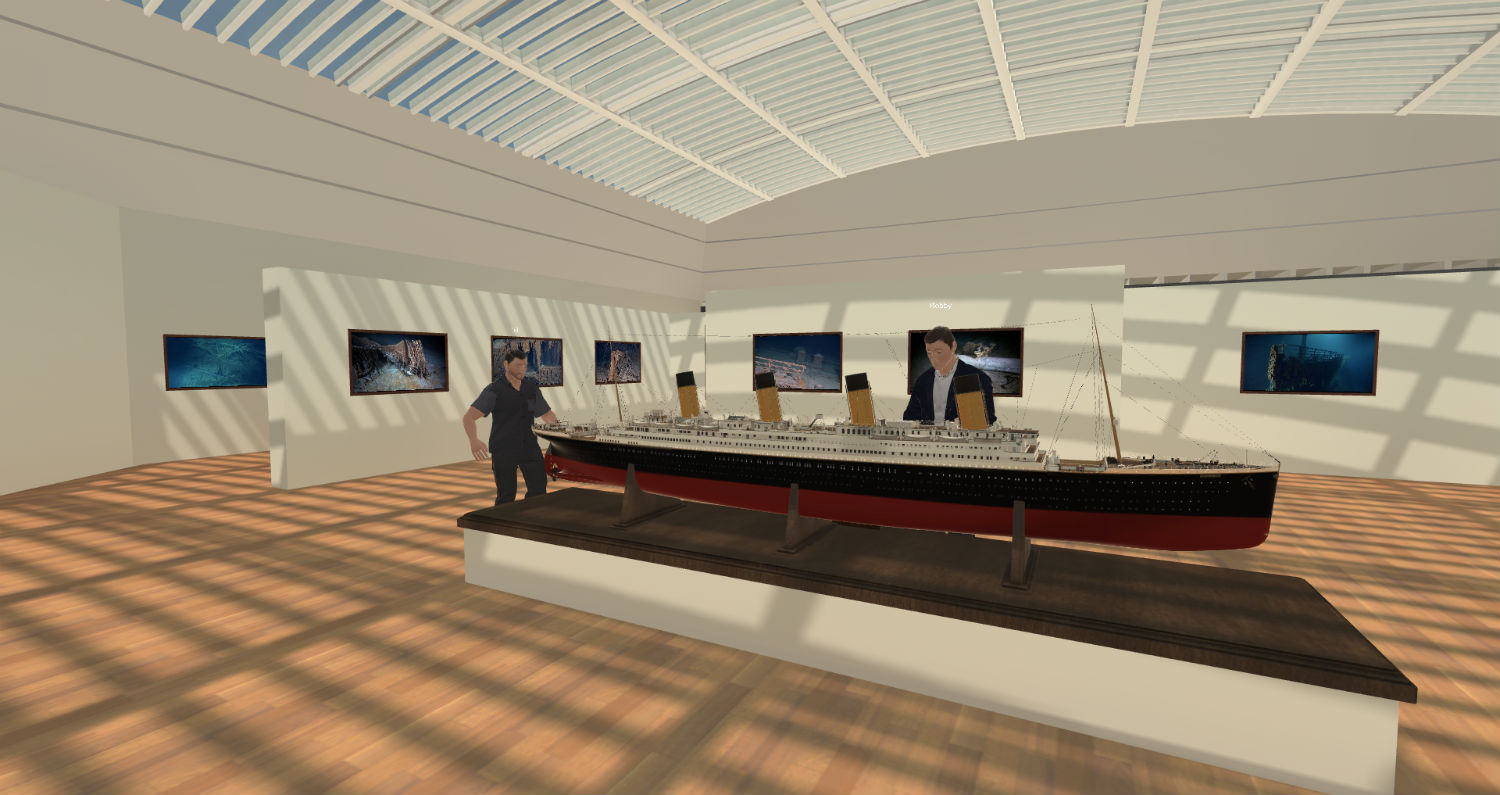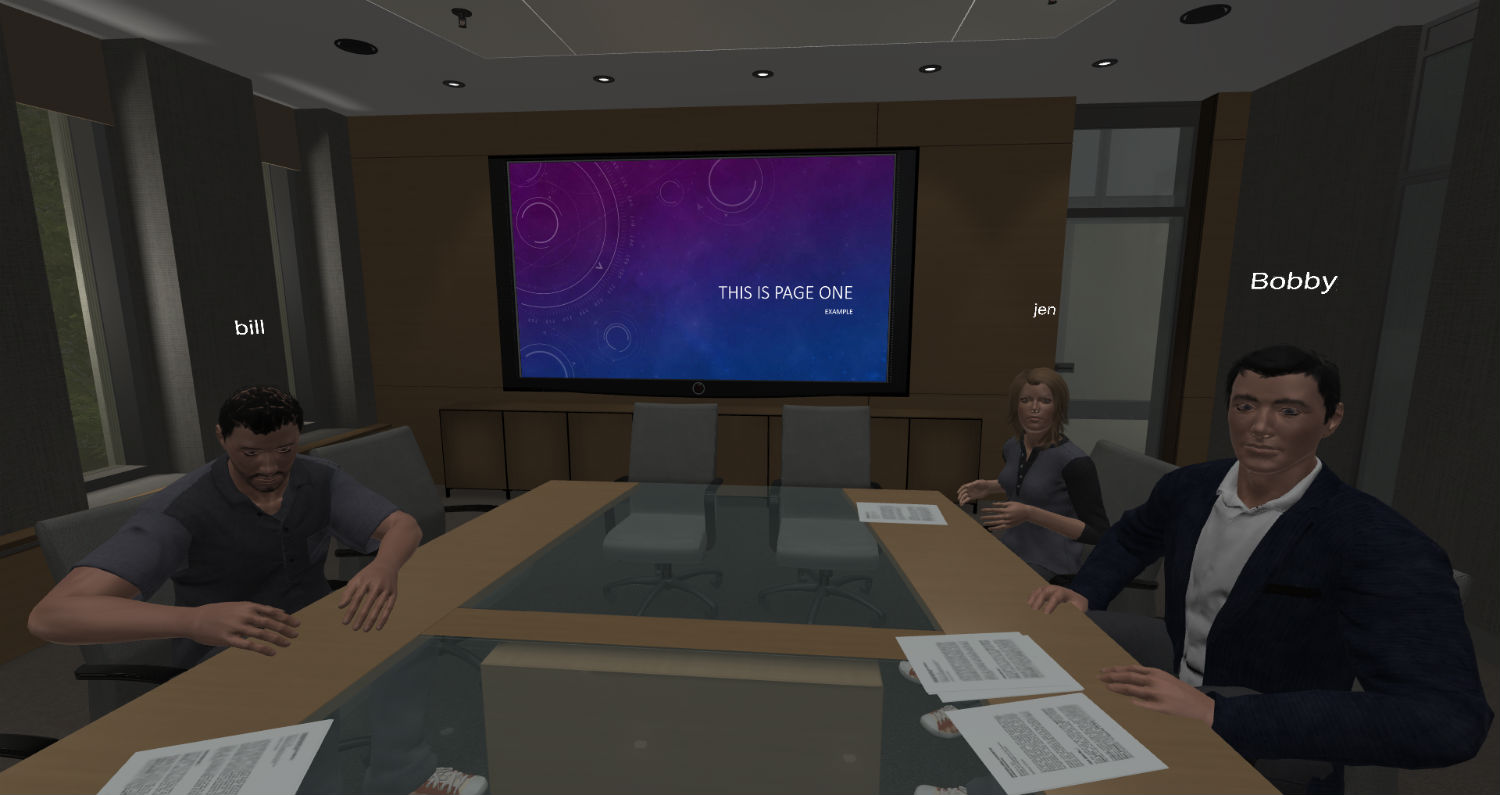One minute I’m standing in a living room in California and the next I’ve materalized next to David Whelan, the founder of Immersive VR Education. We’re in a museum gallery with stereoscopic 3D images from World War I hanging from the walls. Physically, he’s in Europe connected to me through a shoddy 3G cellular data connection. Virtually, he’s beaming across the Atlantic ocean and United States. His avatar’s features are simple and largely undefined, but Whelan nevertheless springs to life from nothing more than his voice and hand movements with a pair of Oculus Touch controllers. I come to life for Whelan too, except I’m using the HTC Vive’s wand controllers. It feels like we are together, and if we high-five each other I’ll feel a slight tingle in my fingers when our hands collide.
For the next 45 minutes Whelan tours me through the latest version of his Engage education platform, as we go from that gallery to Mars and back again, with visits to the Titanic and a lecture from Neil deGrasse Tyson along the way. There aren’t any frills here yet, but it all works and I get the feeling I’m seeing a glimpse at the future of education.
“Many countries, especially in developing parts of the world, can’t build universities fast enough and even worse they can’t find enough professors to take up the available posts as it takes many years to become a fully qualified educator and many more years to become a great teacher,” Whelan wrote in an email. “Virtual Reality will offer a real alternative in the future as educators can be projected into many virtual rooms at the same time…one educator can teach several thousand students in one class sitting instead of just 30 or 40 students.”
Software like Woofbert is paving the way with virtual museums, House of Languages shows how colorful characters can make it fun to learn another language and Speech Center VR accepts presentations so people can practice public speaking in front of a virtual audience. Engage is meant to be a platform upon which similar kinds of educational experiences — and countless more — could be built by an educator with no knowledge of programming.
“Another advantage of the Engage system is that educators can prerecord a class or lecture in one take and if they are happy with their performance they can publish it on the system so others can experience the class as if it was happening live,” Whelan wrote. “Think of ‘Engage’ as a kind of Virtual PowerPoint that is multiplayer and also recordable and easily publishable.”
The big idea behind Engage is that educators can bring existing teaching materials into the software as the basis for a lesson, or entire course, built in VR. The teacher can then lead a class through a guided tour aided by photos, videos, and presentations — even animated 3D models — while also answering questions from students located anywhere in the world.
Engage is launching a new (but still early) version of the platform today for free on Steam. It was formerly called Lecture VR, and the rebranding of the platform as “Engage” encapsulates why VR is poised to revolutionize learning. When Whelan and I are standing on Mars and he extends his arm to draw my attention to the falling Curiosity Rover, I experience chills. When it lands safely on the martian surface right in front of me, and the voices inside mission control fill my ears with excitement, I tear up. This is what Whelan and his team of 10 at Immersive VR Education are aiming for: emotional engagement.
“We do try to evoke an emotional response with everything we create because if you have an emotional response to something you will remember it for a long time,” Whelan continued in the email. “We are trying to bring this concept of making educational concepts and content more emotional giving students enjoyment or empathy for their learning subjects ensuring that what they are being taught at the time will stick with them longer.”
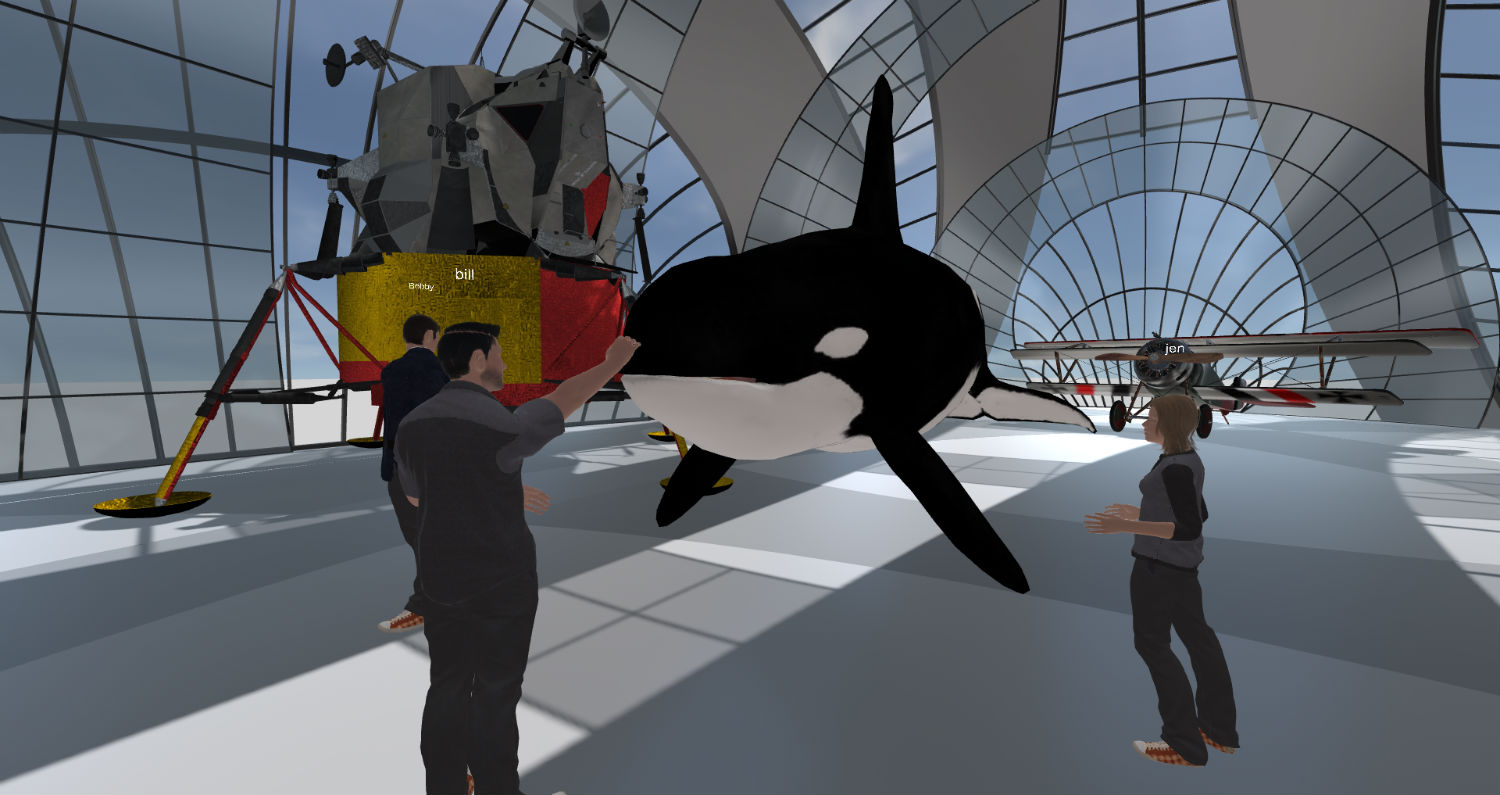
We teleport to a nearby mountain and, along the way, I discover Whelan and his team placed other rovers around the martian landscape. I catch sight of little Sojourner — a shoebox-sized rover dropped onto the planet back in 1997. Not until it is sitting at my feet do I realize how small the tiny thing is in comparison to the car-sized Curiosity dropped in 2012.
The Neil deGrasse Tyson lecture starts in a boring lecture hall, Whelan seated a row in front of me. This setting isn’t very compelling initially, but as Tyson’s talk progresses, he makes a point about the mystery of “fairy rings” and a 3D model of a ring of mushrooms appears in front of me. As Tyson explains how they are naturally occurring, rather than truly being a gathering place for magical creatures, the 3D model morphs to show how the mushrooms form in their ring.
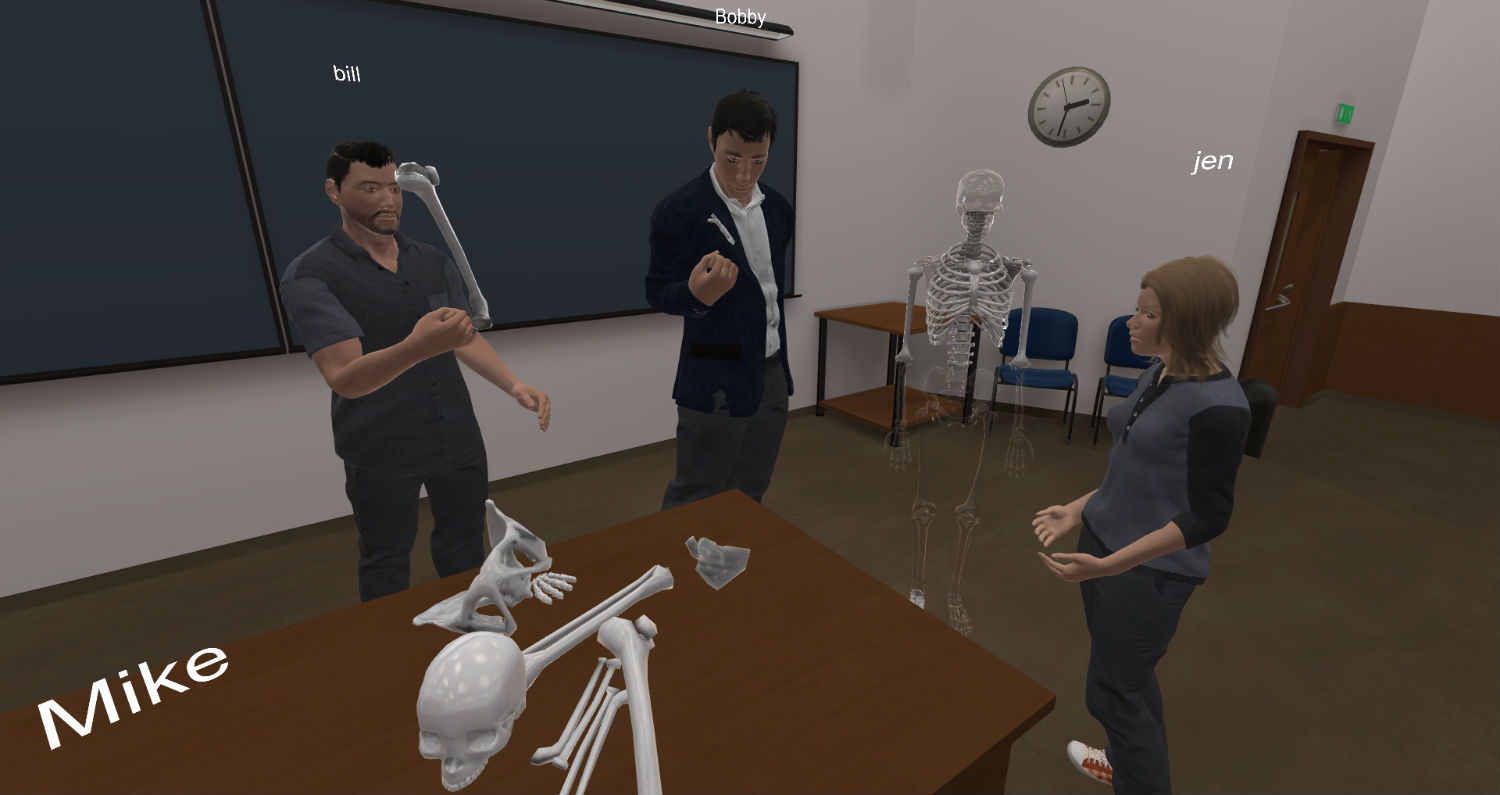
Back in the gallery I stand in front of a detailed 3D model of the Titanic, noting an obvious slant to the large steam funnels I’ve never really noticed in photos or movies about the ship. It’s a moment I might be able to have at a museum, except I’m having it without leaving the house. Then I lean in close to the bow of the Titanic and hear the unforgettable theme music from the James Cameron movie play. I can barely continue the tour I’m laughing so hard.
In one part of the software I have a virtual tablet from which to pull up a PowerPoint presentation to show other people in the room.
“We also see that our system can be used for corporate training or business meetings. You can stream in pretty much any type of media file into the virtual world and we are also supporting Dropbox and Microsoft One Drive out of the box,” Whelan wrote. “Corporate training can be done virtually, reducing cost and travel expenses for business.”
After it all, I was left with the feeling I had seen an early bare-bones version of the public education system depicted in the 2011 novel Ready Player One. In fact, Whelan took me down a hallway to a set of virtual lockers where students might one day find their “books,” just like in the novel.
“This is only the beginning,” Whelan said.

